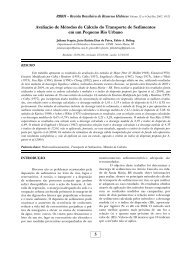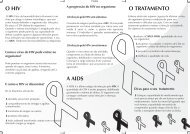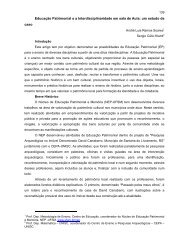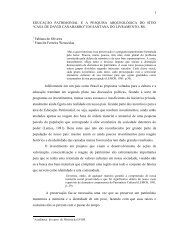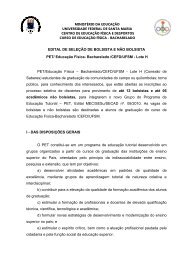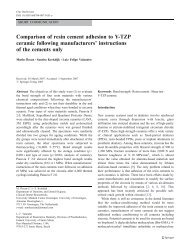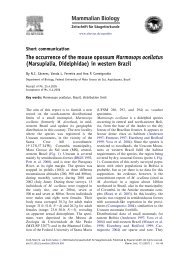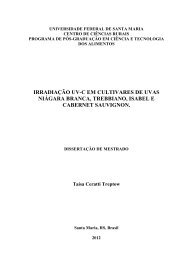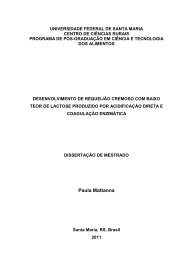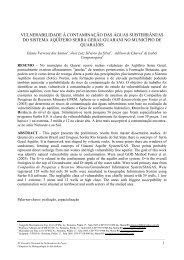DESENVOLVIMENTO E CARACTERIZAÇÃO FÃSICO ... - UFSM
DESENVOLVIMENTO E CARACTERIZAÇÃO FÃSICO ... - UFSM
DESENVOLVIMENTO E CARACTERIZAÇÃO FÃSICO ... - UFSM
You also want an ePaper? Increase the reach of your titles
YUMPU automatically turns print PDFs into web optimized ePapers that Google loves.
61<br />
activated by acyl-S-CoA (RAAP & GUNTERT, 1986). The main ester of in jelly palm wine is a<br />
straight-chain ethyl hexanoate. It was described as the major volatile compound in jelly palm fruit<br />
by Ferrão (2012) and had its aroma described by Bernardi et al., (2013) as the same aroma as jelly<br />
palm fruit. Under the applied treatments the concentration of ethyl hexanoate was lower in the<br />
fermentations at 10 ºC and less days of maceration differing statistically from the treatments at 20<br />
ºC. Besides ethyl hexanoate, the effect of maceration time and temperature were similar for the<br />
others esters present in the wine. According to Killian and Ough, (1979), low fermentation<br />
temperatures (10 ºC) favor the synthesis if fruit esters such as those cited above while high<br />
temperature of fermentation (20 ºC) promotes the production of high molecular height esters. The<br />
treatment M7T20 showed the highest concentration for the esters differing statistically from the<br />
treatment D2T10.<br />
Ethyl acetate was reported in lower concentration in pineapple wine (38.3 µg/l), raspberry<br />
wine (7.9 µg/l) and cacao wine (0.19 µg/l) and the fermentation temperature for those wines ranged<br />
between 22 to 26 ºC (DUARTE et al., 2010a; PINO & QUERIS, 2010). However ethyl acetate<br />
formation is a common microbial fault produced by wine spoilage yeasts and it may be also formed<br />
in wine by a chemical interaction between ethanol and acetic acid (JACKSON, 2000). Therefore<br />
wines with high acetic acid levels are more likely to see ethyl acetate formation. According to<br />
Suomaleinen, (1981), an increase in the fermentation temperature releases higher levels of esters<br />
through more efficient excretion and/or enhanced autolysis of the yeast. An effect of the<br />
temperature on the thermodynamic equilibrium of ester solubility in cellular lipids and the aqueous<br />
medium is another possibly more likely explanation. Selli et al., (2006) has showed that, increasing<br />
the maceration time the concentrations of several esters increased significantly while Torija et al.,<br />
(2003) has reported that at lower temperatures (10-15 ºC) the concentration of volatile compounds,<br />
such as, esters increase. In jelly palm wine, esters were found in high concentration for the<br />
treatments fermented at 20 ºC and with 7 days of maceration.<br />
3.4 Acids<br />
Maceration time and fermentation temperature have a straight relation with acids<br />
concentration in wine. In general, in a traditional fermentation fatty acid concentrations increase<br />
in prolonged maceration time and high temperatures (RODRÍGUEZ-BENCOMO et al., 2008;



